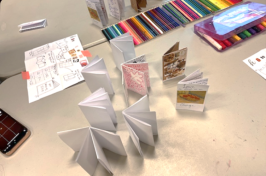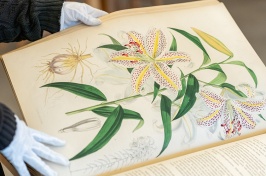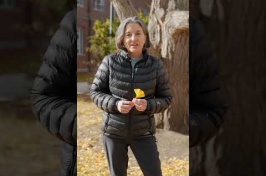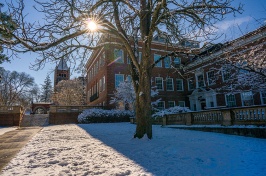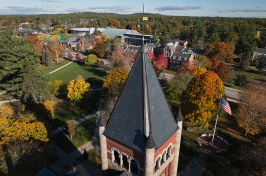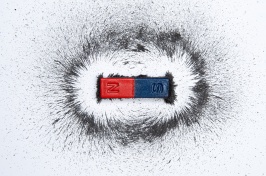Could This Year’s Drought Dull Fall Foliage Viewing? You May be Surprised.
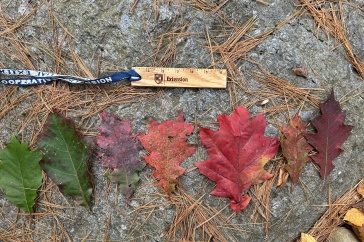
A variety of red oak leaves show how different layers of the tree canopy can develop at different times, with the outer layer usually changing first. Credit: UNH Extension
DURHAM, N.H.—Fall is in the air and thoughts turn to pumpkins, cider and brightly colored leaves. According to experts at the University of New Hampshire’s Extension, despite drought conditions in the Northeast there should be plenty of leaf peeping opportunities this year, it is just happening a little earlier.
“The drought is still pretty widespread but luckily there are still a lot of leaves out there and as long as there is a green canopy we’ll be able to enjoy the colors of the fall foliage,” said Steve Roberge, professor of natural resources and UNH Extension forestry specialist. “The dry conditions are causing the leaves to show off their colors earlier, and in some cases may not be as bright, but I’ve driven all around the state in the last few weeks and there is still a lot of foliage boasting those expected hues and should be more well into October.”
According to Roberge, colorful fall foliage is guided by the weather and needs sufficient rainfall during the growing season and plenty of warm, sunny days and clear, cool nights in the late summer and early autumn. He points to the fact that this year’s growing season was quite wet but there was not a lot of leaf damage or fungal issues.
“Even with all the drought, you still see color because it is already in the leaves from the rainy weather we had this spring,” said Roberge. “The color’s reveal is controlled by the length of the days and nights as we head into fall. What has been great so far are these lovely 45 degree nights that help to bring out the first reds and deep purple colors.”
When the days are warm, around 70 or 80 degrees, and the temperature drops back to around 40 degrees at night, the trees’ cells start to break down sugars. That causes the production of chlorophyll — the green color in leaves — to slow down. When that happens, the hidden pigments in the leaf, known as carotenoids and anthocyanin, are revealed causing the deep fall tones — the yellow, brown and russet, or the red and orange.
One concern for forestry experts, not related to the drought, is the spread of beech leaf disease which can claim a beech tree in one to two years. Beech leaf disease was first observed in the midwest in 2012 and has now spread to over a dozen states, including all six New England states.
Roberge said beech trees are known for their russet yellow hue — the golden glow seen near the end of fall foliage season. The disease can cause issues with photosynthesis and the heavy infestation is killing trees so there is a noticeable loss of canopy which could impact fall foliage viewing in some areas, like the New Hampshire Seacoast.
For the rest of the trees populating New England, it should be business as usual. Each tree species starts to shut down chlorophyl production at its own pace with red maples in low lying areas and swamps showing off their colors first, often in mid-August. Other species like oak, ash, birch and other maples, need the long cool nights to show off their yellows, oranges and purples.
“People always ask me when peak leaf peeping season is going to be and I always say whenever you have the time to get out and enjoy it,” said Roberge. “If you go for a drive, or a walk or simply look around, there are already plenty of red maples and yellow birches starting to show off their bright hues and are just glorious.”
PHOTOS AVAILABLE TO DOWNLOAD
Caption: Red maples in low lying areas tend to show off their colors first when the pigment called anthocyanin is unmasked revealing a bright color red.
Photo credit: UNH Extension
https://www.unh.edu/unhtoday/sites/default/files/foliage_-_red_oak.jpg
Caption: A variety of red oak leaves show how different layers of the tree canopy can develop at different times, with the outer layer usually changing first.
Photo credit: UNH Extension
https://www.unh.edu/unhtoday/sites/default/files/foliage_-_red_and_yellow.jpg
Caption: Red maple tree shows off two different colors.
Photo credit: UNH Extension
Latest News
-
December 4, 2025
-
November 26, 2025
-
November 6, 2025
-
November 5, 2025
-
October 24, 2025

